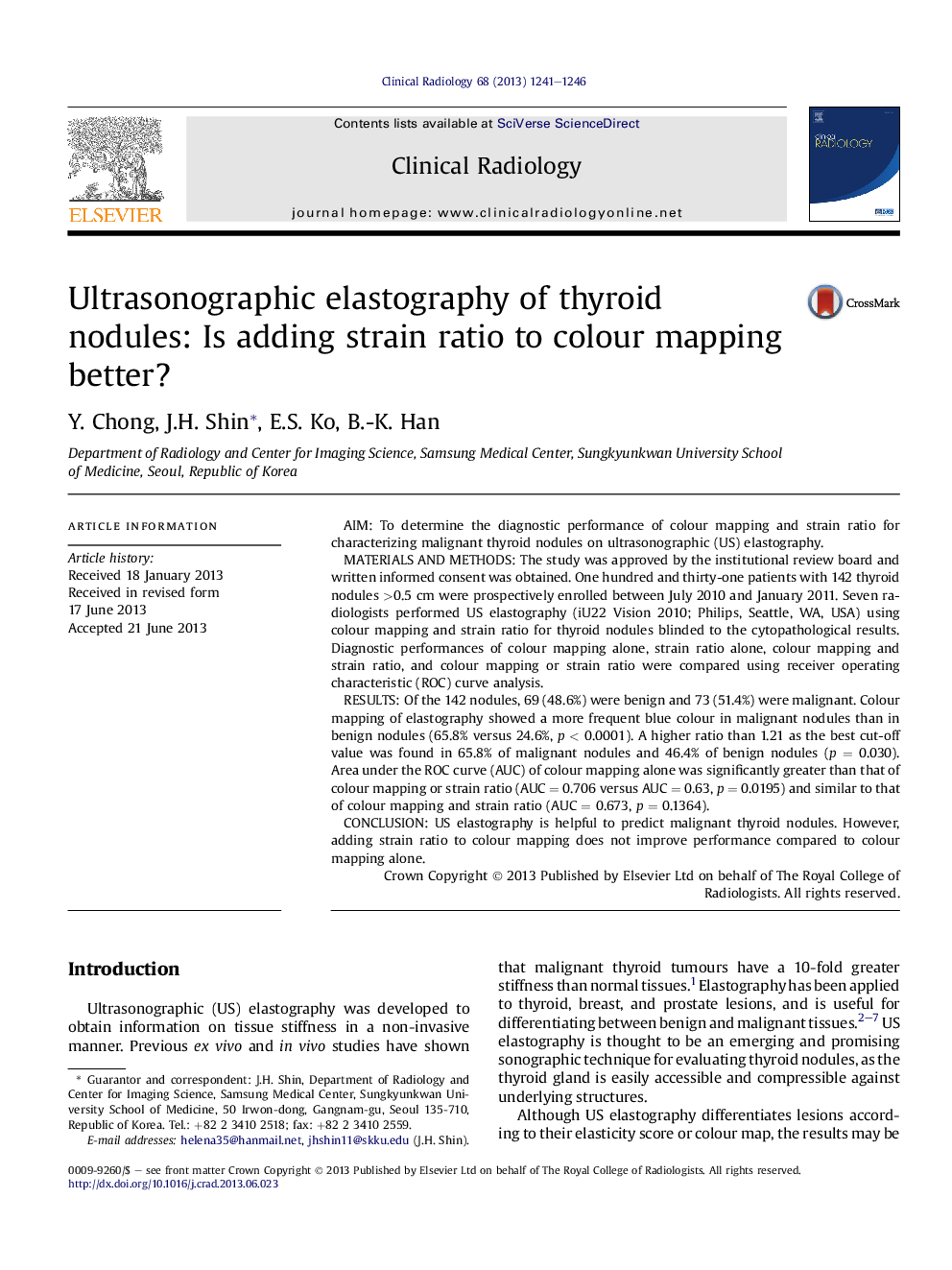| Article ID | Journal | Published Year | Pages | File Type |
|---|---|---|---|---|
| 3982369 | Clinical Radiology | 2013 | 6 Pages |
AimTo determine the diagnostic performance of colour mapping and strain ratio for characterizing malignant thyroid nodules on ultrasonographic (US) elastography.Materials and methodsThe study was approved by the institutional review board and written informed consent was obtained. One hundred and thirty-one patients with 142 thyroid nodules >0.5 cm were prospectively enrolled between July 2010 and January 2011. Seven radiologists performed US elastography (iU22 Vision 2010; Philips, Seattle, WA, USA) using colour mapping and strain ratio for thyroid nodules blinded to the cytopathological results. Diagnostic performances of colour mapping alone, strain ratio alone, colour mapping and strain ratio, and colour mapping or strain ratio were compared using receiver operating characteristic (ROC) curve analysis.ResultsOf the 142 nodules, 69 (48.6%) were benign and 73 (51.4%) were malignant. Colour mapping of elastography showed a more frequent blue colour in malignant nodules than in benign nodules (65.8% versus 24.6%, p < 0.0001). A higher ratio than 1.21 as the best cut-off value was found in 65.8% of malignant nodules and 46.4% of benign nodules (p = 0.030). Area under the ROC curve (AUC) of colour mapping alone was significantly greater than that of colour mapping or strain ratio (AUC = 0.706 versus AUC = 0.63, p = 0.0195) and similar to that of colour mapping and strain ratio (AUC = 0.673, p = 0.1364).ConclusionUS elastography is helpful to predict malignant thyroid nodules. However, adding strain ratio to colour mapping does not improve performance compared to colour mapping alone.
